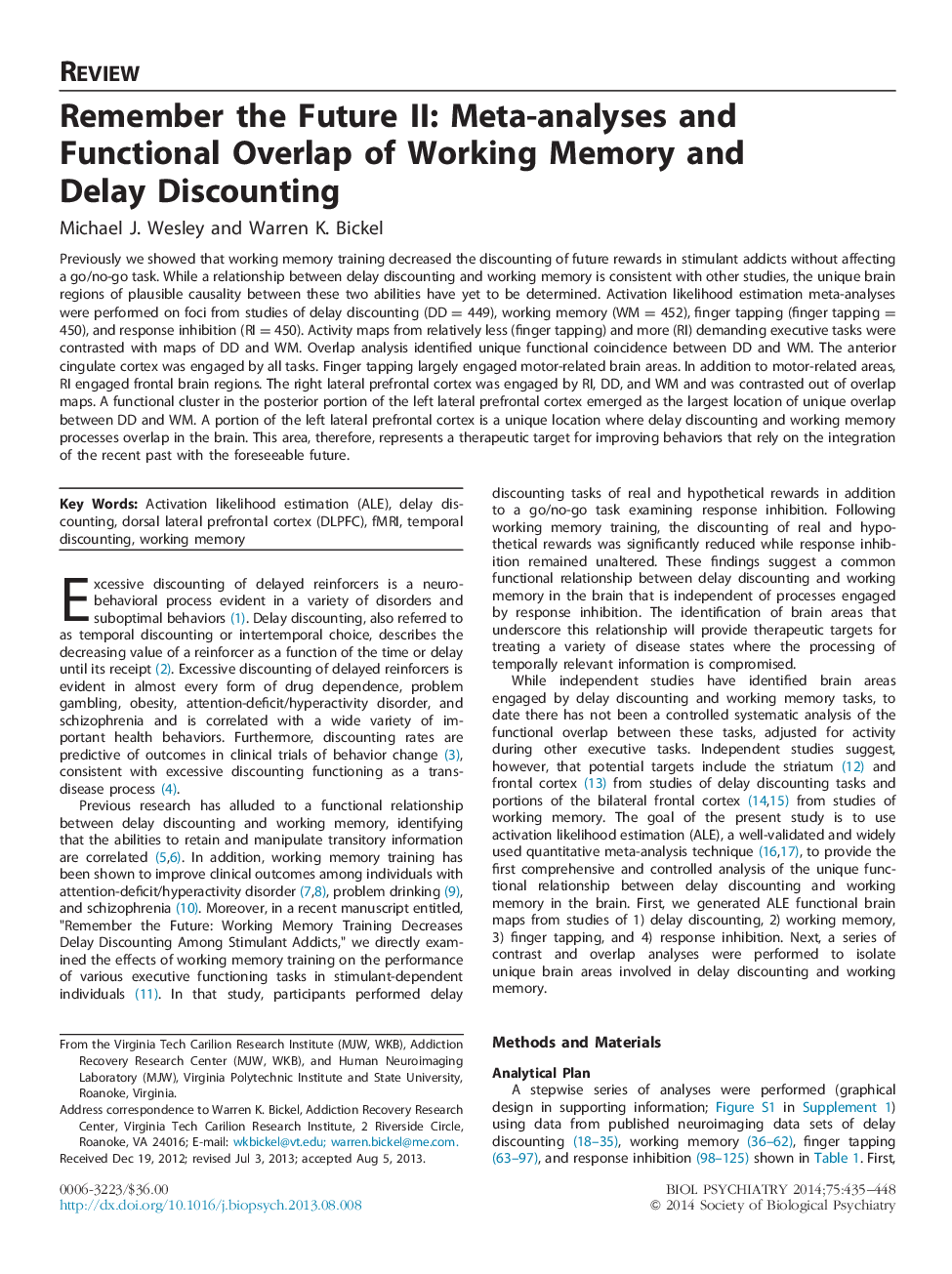| کد مقاله | کد نشریه | سال انتشار | مقاله انگلیسی | نسخه تمام متن |
|---|---|---|---|---|
| 4177966 | 1276464 | 2014 | 14 صفحه PDF | دانلود رایگان |

Previously we showed that working memory training decreased the discounting of future rewards in stimulant addicts without affecting a go/no-go task. While a relationship between delay discounting and working memory is consistent with other studies, the unique brain regions of plausible causality between these two abilities have yet to be determined. Activation likelihood estimation meta-analyses were performed on foci from studies of delay discounting (DD = 449), working memory (WM = 452), finger tapping (finger tapping = 450), and response inhibition (RI = 450). Activity maps from relatively less (finger tapping) and more (RI) demanding executive tasks were contrasted with maps of DD and WM. Overlap analysis identified unique functional coincidence between DD and WM. The anterior cingulate cortex was engaged by all tasks. Finger tapping largely engaged motor-related brain areas. In addition to motor-related areas, RI engaged frontal brain regions. The right lateral prefrontal cortex was engaged by RI, DD, and WM and was contrasted out of overlap maps. A functional cluster in the posterior portion of the left lateral prefrontal cortex emerged as the largest location of unique overlap between DD and WM. A portion of the left lateral prefrontal cortex is a unique location where delay discounting and working memory processes overlap in the brain. This area, therefore, represents a therapeutic target for improving behaviors that rely on the integration of the recent past with the foreseeable future.
Journal: Biological Psychiatry - Volume 75, Issue 6, 15 March 2014, Pages 435–448